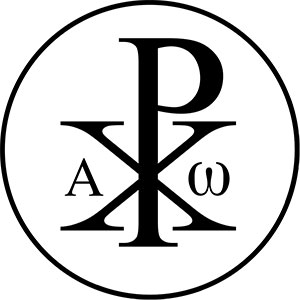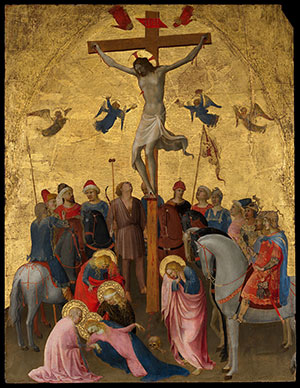Credo: A 12-part series on the creed
Editor's note: This article is the fourth of 12 in a new series on the Creed by Deacon Matthew Newsome. Explore the series.
 Having explored the incarnation in last month’s column on the Word made flesh, we now turn our attention to the other end of Christ’s earthly life, the crucifixion. The fourth article of the Apostles’ Creed states that “Jesus Christ suffered under Pontius Pilate, was crucified, died, and was buried.”
Having explored the incarnation in last month’s column on the Word made flesh, we now turn our attention to the other end of Christ’s earthly life, the crucifixion. The fourth article of the Apostles’ Creed states that “Jesus Christ suffered under Pontius Pilate, was crucified, died, and was buried.”
Before we look at the crucifixion itself, we should first say a word about Pontius Pilate. Other than the Virgin Mary and Jesus Christ, his is the only proper name mentioned in the Creed.
Why should such an honor be paid to a pagan Roman governor who famously washed his hands of anything to do with Christ (Mt 27:24)? Pilate’s name gives important historic context to the crucifixion of Christ. It places it at a fixed point in history. The Romans were excellent record keepers, and so we know that Pontius Pilate was the fifth Roman governor of Judea who served in that position from 26 to 36 AD, plus or minus a year.
The inclusion of Pilate’s name in the Creed is an important reminder to us that our faith is not in a cleverly devised myth or legend, but in a real, historical person who was born, lived, died – and, as the gospels record, rose from the dead. As St. Paul attested, if Christ is not truly raised from the dead, then empty is our preaching and empty is our faith (1 Cor 15:14). But to be raised from the dead, one first has to die.
In the fourth century, a great doctor of the Church, St. Athanasius, wrote “On the Incarnation.” In this work, he argues that the death of Jesus was the very reason for the incarnation. The one thing Jesus did not possess as God, the source of all being and the source of all life, was the ability to die. And the one thing we need from God is eternal life. We could never, on our own, acquire God’s immortality, but as our Creator, God can take to Himself our mortality.
The incarnation was thus a divine exchange, allowing Jesus, by His death, to gain for us everlasting life.
Why a public, agonizing death?
 But why this kind of death? Roman crucifixion was the most excruciating form of execution ever conceived by the heart of sinful man. Indeed, it is the source of the word “excruciating,” from the Latin crux, or “cross.”
But why this kind of death? Roman crucifixion was the most excruciating form of execution ever conceived by the heart of sinful man. Indeed, it is the source of the word “excruciating,” from the Latin crux, or “cross.”
Some have objected to the divinity of Christ for this very reason – if Jesus is truly God, it would seem terribly unfitting that He would die in such a public and shameful way as a condemned criminal. This is why St. Paul calls the crucifixion “a stumbling block for Jews and foolishness for the Gentiles” (1 Cor 1:23). St. Athanasius addresses these objections.
First, if Jesus had to die to save us, why not die in a more dignified manner? Why not live a long, fruitful life and die peacefully in His bed of old age?
St. Athanasius says no. Were our Savior to die a death like that, it would appear that He died from His own weakness, because His body wore out over time. But Jesus is strong, not weak. It would be unfitting for the great Healer to Himself succumb to age or disease. Instead, death came to Jesus from others.
But why did it have to be so public? Would a private death not have been less shameful?
If His death had not been witnessed by the crowds, His resurrection would not have been believable. People would have assumed He was faking, reappearing after hiding for three days, only claiming to have died. No, there had to be witnesses, many witnesses. Christ’s death had to be a public spectacle for the resurrection to be believed.
But why so painful a death? Even given that God chose to die as man for our sins, surely He had it within His power to choose a less painful means for His sacrifice.
I love St. Athanasius’ rebuttal to this objection. He notes that a strong, confident wrestler doesn’t selectively choose His own opponents but rather takes on all comers. If Jesus had chosen His own form of death, one less painful or less shameful, or easier to endure, it would have suggested that His power over death was limited. Instead, at the crucifixion, our Lord stands on the hill of Calvary staring Death in the face saying, “Give me your worst.”
The cross is our salvation
By permitting His enemies – chief among them Satan – to choose the manner and means of His death, St. Athanasius writes, “A marvelous and mighty paradox has thus occurred, for the death which they thought to inflict on Him as dishonor and disgrace has become the glorious monument to death’s defeat.” More than 2,000 years later, we continue to honor that monument to death’s defeat, that instrument of torture which has become the means of our salvation and the gateway to eternal life, the Holy Cross on which hung the Savior of the world.
Upon the wood of the cross, Jesus hangs with arms outstretched, one to the Jews, the other to the Gentiles, embracing all peoples and races, nations and tongues, just as He prophesied: “And when I am lifted up from the earth, I will draw everyone to myself” (Jn 12:32).
Deacon Matthew Newsome is the Catholic campus minister at Western Carolina University. He is the author of “The Devout Life: A Modern Guide to Practical Holiness with St. Francis de Sales,” available from Sophia Institute Press.


